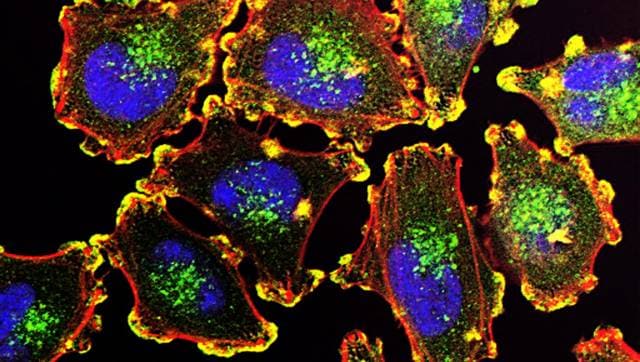Why early detection and treatment is important to cure childhood cancers
Childhood cancer is not common and no widely recommended screenings are available to detect cancer in children who are not at increased risk

File image of Metastatic Melanoma Cells. Image courtesy Unsplash/National Cancer Institute
The cells in our body have a system that controls how the cell grows, interacts with other cells and for how long it lives. However, sometimes the cells lose their control and end up growing in a manner that the body can no longer control growth. This results in the development of cancer.
Childhood cancer is difficult to detect in the early stages as the sign and symptoms associated with the disease are non-specific and unidentified on its onset like other common disorders. Childhood cancer is not common and no widely recommended screenings are available to detect cancer in children who are not at increased risk. Some children have chances of developing some specific type of cancer due to gene changes they inherit from a parent. Such children should go for regular check-ups including special tests recommended by doctors to detect cancer at an early stage. If detected timely, childhood cancer has the best outcome with current scientific treatment.
There are different types of cancer, however, they develop in the same way as the cells, namely:
- They grow out of control
- They may develop unusual sizes and shapes
- They move past their boundaries that exist in the body
- They may also end up destroying other healthy cells in their vicinity
As the cancer cells grow in a person’s body, they make them weaker. They start harming other organs and bones. This further makes it hard for the body to fight off other illnesses.
While cancer in children is uncommon, it can still take place. Some common types of cancer in children are listed below:
- Leukemia – a type of blood cancer that affects the body’s white blood cells. A more common type of leukemia in children is acute lymphoblastic leukemia, which takes place when the body makes too many lymphoblasts (a type of white blood cells)
- Lymphoma – it is a type of cancer that begins in the lymphatic tissue (a part of the body’s immune system)
- Brain cancer – there are different types of brain and nervous system cancers and are categorized based on where the tumors exist
- Bone cancer or osteosarcoma – it is the most common type of bone cancer and accounts for about 3% of cancers that happen in children
Pediatric cancers have a different form of treatment than that of cancer in adults. The differences are stated below:
- The cause of cancer in children differs from the cause in adults. For example, adults may get cancer due to consumption of tobacco or alcohol
- Children respond well to cancer treatment, majority children with cancer get better
- Side-effects of cancer treatment such as chemotherapy causing adverse effects can be more severe in children. Children who are cancer survivors will need medical follow-up for the rest of their lives
To treat cancer in children it is important to consult a medical centre that specialises in pediatric oncology. The treatment may include the following:
- Surgery
- Chemotherapy
- Radiation therapy
- Bone marrow transplant
While the cause of cancer in children is unknown, it is said to develop due to mutations in the genes of the growing cells. Parents can help by getting their children checked at the first signs of cancer and involving the children with their own treatment. The children need to understand the facts about cancer and its effects on them. To find support, parents can consult their primary caregiver which can help in reassurance and help in coping with the illness.
The author is Director, Haematology, Fortis Hospital, Noida.
For all the latest health News Click Here

